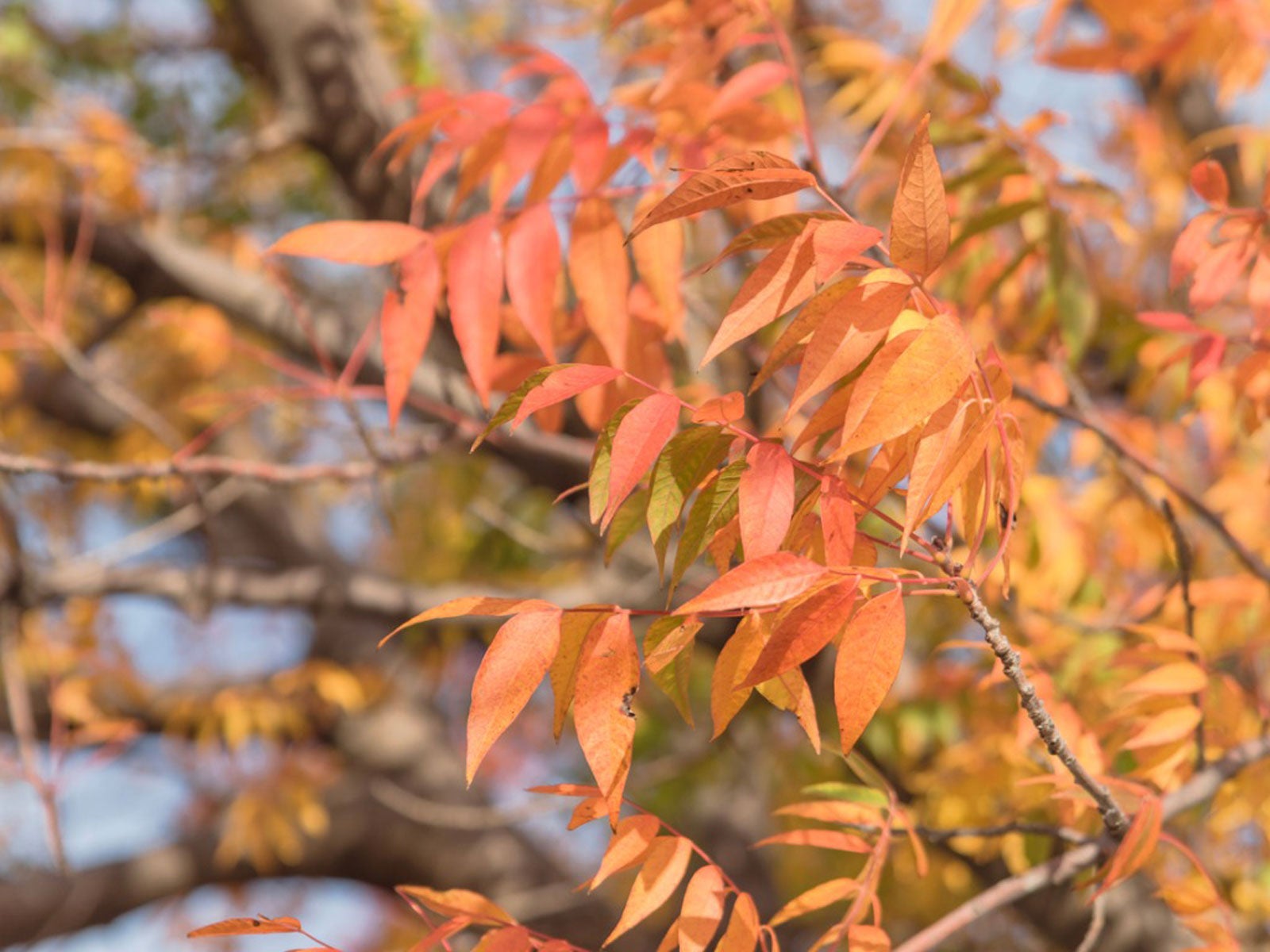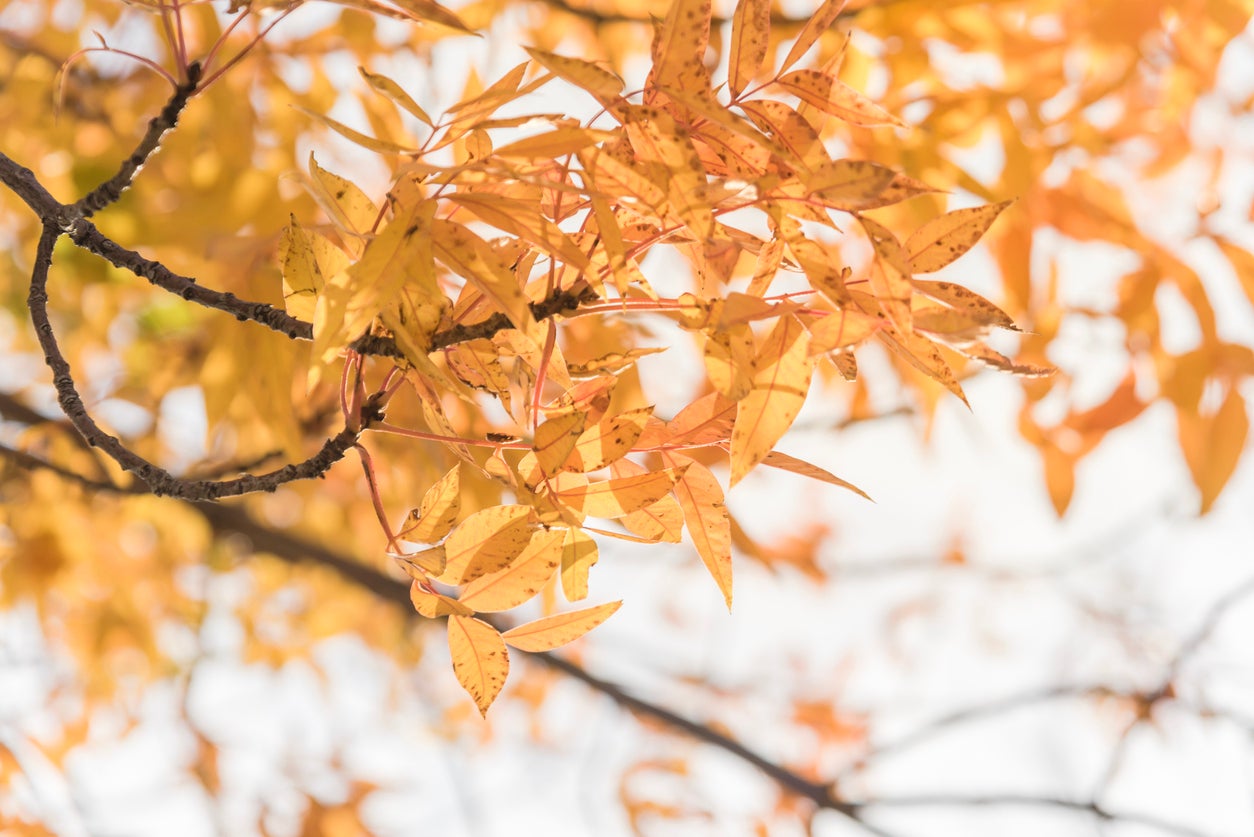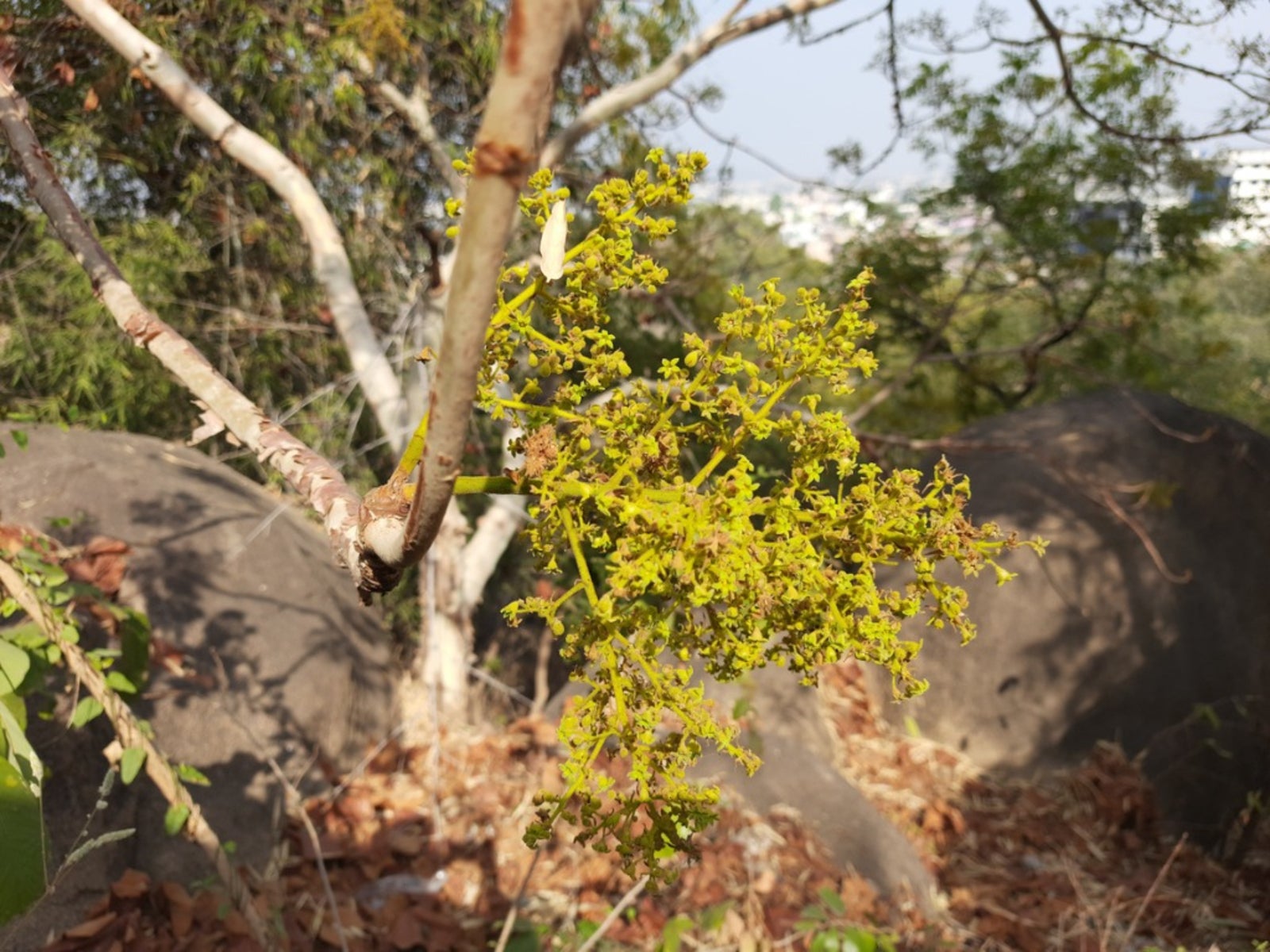Chinese Pistache Facts: Tips On Growing A Chinese Pistache Tree

If you are looking for a tree suitable for a xeriscape landscape, one with ornamental attributes which also fulfills a valuable niche for wildlife, look no further than the Chinese pistache tree. If this piques your interest, read on for additional Chinese pistache facts and care of Chinese pistache.
Chinese Pistache Facts
The Chinese pistache tree is, as mentioned, a notable ornamental tree, especially during the fall season when the normally dark green foliage changes to a dramatic profusion of orange and red leaves. An excellent shade tree with a broad canopy, Chinese pistache will attain heights of between 30-60 feet (9-18 m.). A deciduous tree, the one foot (30 cm.) long pinnate leaves consist of between 10-16 leaflets. These leaves are mildly aromatic when bruised. Pistacia chinensis, as the name suggests, is related to the pistachio; however, it does not produce nuts. Instead, if a male Chinese pistache tree is present, the female trees bloom in April with inconspicuous green blossoms that develop into clumps of brilliant red berries in the fall, changing to a blue-purple hue in the winter. While the berries are inedible for human consumption, the birds go nuts for them. Keep in mind that the bright colored berries will drop and may stain or create a slippery walkway. If this is a concern, consider planting P. chinensis ‘Keith Davey,’ a fruitless male clone. Native to China, Taiwan and the Philippines, Chinese pistache grows at a moderate pace (13-24 inches (33-61 cm.) per year) and is relatively long lived. It is also tolerant of many soil types as well as being drought tolerant with roots that grow deep into the soil. The bark of growing Chinese pistache is grayish-brown and, if peeled from the tree, reveals a shocking salmon pink interior. So what are some landscape uses for Chinese pistache trees?
Chinese Pistache Uses
Chinese pistache is not a fussy tree. It can be grown in USDA zones 6-9 in a variety of soils as long as the soil is well draining. It is a sturdy tree with deep roots that make it an ideal specimen for near patios and sidewalks. It is heat and drought tolerant and winter hardy to 20 degrees F. (-6 C.) as well as relatively pest and fire resistant. Use Chinese pistache anywhere you would like to add a shade addition to the landscape with the bonus of an opulent fall appearance. This member of the Anacardiaceae family also makes a lovely container specimen for the patio or garden.
Care of Chinese Pistache
The Chinese pistache is a sun lover and should be situated in an area of at least 6 hours of direct, unfiltered sunlight per day. As mentioned, Chinese pistache isn’t picky about the soil it’s grown in as long as it drains well. Choose a site of not only plenty of sun, but with fertile soil deep enough to accommodate the long taproots and at least 15 feet (4.5 m.) away from nearby structures to account for their growing canopies. Dig a hole as deep as and 3-5 times as wide as the root ball of the tree. Center the tree in the hole, spreading the roots out evenly. Refill the hole; don’t amend it, as it is not necessary. Tamp the dirt down lightly around the base of the tree to remove any air pockets. Water the tree in well and spread a 2- to 3-inch (5-7.5 cm.) layer of mulch around the base, away from the trunk to discourage fungal disease, rodents and insects. Although Chinese pistache trees are fairly disease and pest resistant, they are susceptible to verticillium wilt. Avoid planting them in any area that has had previous contamination. Once the tree has been planted, continue to water twice a week for the next month while the tree acclimates. Thereafter, check the soil once a week and water only when the top one inch (2.5 cm.) is dry. Feed trees under 5 years old in the spring and fall with a nitrogen based fertilizer. Use one that is supplemented with superphosphate only if they are growing less than 2-3 feet per year to give them a boost. Young Chinese pistache should be pruned in January or February to facilitate their signature umbrella shape. When trees are six feet (1.5+ m.) tall, prune the tops of the trees. As branches emerge, choose one as the trunk, another as a branch and prune out the remainder. When the tree has grown another three feet, prune them to 2 feet (61 cm.) above the previous cut to encourage branching. Repeat this process until the trees are symmetrical with an open canopy. Keep leaf debris and fallen berries raked up from around the trees to prevent unwanted seedlings.
Gardening tips, videos, info and more delivered right to your inbox!
Sign up for the Gardening Know How newsletter today and receive a free copy of our e-book "How to Grow Delicious Tomatoes".

Amy Grant has been gardening for 30 years and writing for 15. A professional chef and caterer, Amy's area of expertise is culinary gardening.
-
 Try The Trend – Turn Any Bed Into A Keyhole Garden With This Clever In-Ground Composter
Try The Trend – Turn Any Bed Into A Keyhole Garden With This Clever In-Ground ComposterKeyhole gardening is an efficient and sustainable practice that saves space. Get started on this DIY project quickly and easily with an in-ground composter.
By Bonnie L. Grant
-
 4 Superfast Composting Methods: Turn Waste Into Garden Gold In 30 Days Or Less
4 Superfast Composting Methods: Turn Waste Into Garden Gold In 30 Days Or LessTry the fastest composting methods to turbocharge your pile and transform kitchen scraps and garden waste into finished compost in just a few weeks.
By Mary Ellen Ellis
-
 Chinese Pistache Issues: Chinese Pistache Tree Losing Leaves And Other Problems
Chinese Pistache Issues: Chinese Pistache Tree Losing Leaves And Other ProblemsIf you see your Chinese pistache tree losing leaves during the growing season, there’s a problem. Early Chinese pistache leaf drop or leaf yellowing often results from an irrigation issue, but it can also signal more serious problems. Learn more in this article.
By Teo Spengler
-
 Pruning Chinese Pistache: How To Prune A Chinese Pistache Tree
Pruning Chinese Pistache: How To Prune A Chinese Pistache TreeChinese pistache pruning isn’t difficult once you understand the basics of the tree’s growth pattern. Click the following article for information about cutting back Chinese pistache including tips on when and how to prune a Chinese pistache tree.
By Teo Spengler